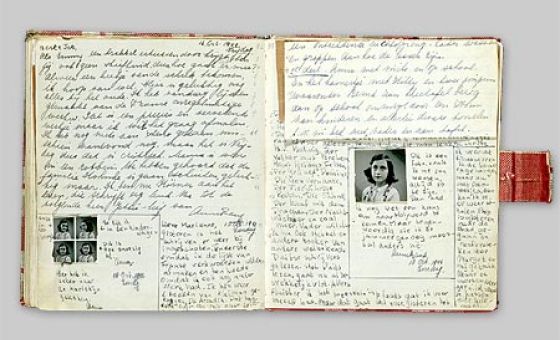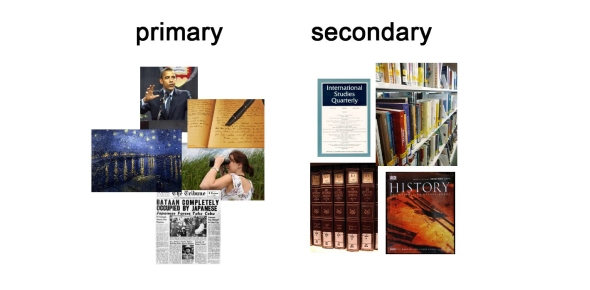What Do You Know About Historical Sources?
-
What are 'artefacts'?
-
Items that people bury in the ground.
-
Things made and used by people in the past.
-
Items that historians store in the museum.
-
Things that people use in their daily lives.
-
Explore the essence of historical sources through this engaging quiz. Assess your understanding of primary sources, artefacts, and oral traditions, and learn how these elements shape our perception of history.
(357).jpg)
Quiz Preview
- 2.
Identify the type of source shown below.
-
Pictorial record - Poster
-
Artefact - Book
-
Written account - Diary
-
Written account - Letter
Correct Answer
A. Written account - DiaryExplanation
The given source is a written account in the form of a diary. A diary is a personal record where individuals write about their daily experiences, thoughts, and emotions. It provides an insight into the author's life and can be used as a historical source to understand the past from a personal perspective.Rate this question:
-
- 3.
Identify the type of source shown below. Chinese ceramic dated 14th to 19th Century, found in Singapore
-
Pictorial Records
-
Written Accounts
-
Artefacts
-
Oral tradition
Correct Answer
A. ArtefactsExplanation
The given source is a Chinese ceramic dated from the 14th to 19th century, found in Singapore. It is categorized as an artifact because it is a physical object that was created by humans in the past and provides evidence of their culture, history, and craftsmanship.Rate this question:
-
- 4.
What is a 'primary source'?
-
It has been constructed from other sources of information.
-
It is a type of artefact that was used by people from the past.
-
It was created by historians to write books.
-
It was produced close to or at the time of the event and by people who experienced the event.
Correct Answer
A. It was produced close to or at the time of the event and by people who experienced the event.Explanation
A primary source refers to a firsthand account or evidence that was created during or shortly after the event by individuals who directly experienced it. This could include documents, letters, diaries, photographs, or recordings that provide direct insight into the event or time period being studied. The other options are incorrect as they do not align with the definition of a primary source.Rate this question:
-
- 5.
What are 'oral traditions'?
-
Stories found in books passed from one generation to another.
-
Traditional items from the different ethnic groups.
-
Legends, myths, tales and stories told from one generation to another.
-
Fragments of traditional items found in museums.
Correct Answer
A. Legends, myths, tales and stories told from one generation to another.Explanation
Oral traditions refer to the transmission of knowledge, cultural practices, and historical events through spoken words, rather than written texts. This includes legends, myths, tales, and stories that are passed down from one generation to another through storytelling. It is a way for communities to preserve and share their cultural heritage, beliefs, and values. It is distinct from stories found in books or fragments of traditional items found in museums, as oral traditions rely on the spoken word and the act of storytelling.Rate this question:
-
- 6.
Why do historians need sources?
-
It provides historians with information on the past.
-
It helps historians to gain recognition in museums.
-
It allows historians to construct knowledge of the past.
-
It enables historians to investigate events that happened in the past.
Correct Answer(s)
A. It provides historians with information on the past.
A. It allows historians to construct knowledge of the past.
A. It enables historians to investigate events that happened in the past.Explanation
Historians need sources because they provide them with information on the past. Sources allow historians to construct knowledge of the past by providing them with evidence and data. They enable historians to investigate events that happened in the past by providing them with firsthand accounts, documents, artifacts, and other forms of evidence. By analyzing and interpreting these sources, historians can gain insights into historical events, understand the context in which they occurred, and develop a more accurate understanding of the past.Rate this question:
-
- 7.
Which of the following can be categorized as an 'artefact'?
Correct Answer(s)
A. ]]Gold Armlet, mid-14th Century
A. SIA Kebaya (Traditional Costume), 1968, Singapore
A. 'Coinafon', Public Telephone, 1970s, Singapore
A. Malay coin, 1800sExplanation
The items that can be categorized as an 'artefact' are the Gold Armlet, mid-14th Century, SIA Kebaya (Traditional Costume), 1968, Singapore, 'Coinafon', Public Telephone, 1970s, Singapore, and Malay coin, 1800s. These items are considered artefacts because they are objects that were created or used by humans in the past and hold historical, cultural, or artistic significance.Rate this question:
- 8.
Which of the following can be categorized as 'pictorial records'?
Correct Answer(s)
A. Map of Singapore River, 1819
A. Portrait of Sir Stamford Raffles
A. Poster 'No long hair', 1960s-1970s, Singapore
A. Photograph of road leading to Sultan Mosque, 2009Explanation
The given answer options consist of visual representations that can be considered as pictorial records. A map is a visual representation of a specific location, while a portrait is a visual representation of a person. The poster and photograph are also visual representations of specific events or places. Therefore, all of these options can be categorized as pictorial records.Rate this question:
Quiz Review Timeline (Updated): Nov 16, 2023 +
Our quizzes are rigorously reviewed, monitored and continuously updated by our expert board to maintain accuracy, relevance, and timeliness.
-
Current Version
-
Nov 16, 2023Quiz Edited by
ProProfs Editorial Team -
May 28, 2015Quiz Created by
Snurhusnaa
Primary And Secondary Sources II
Explore the distinction between primary and secondary sources with examples like the original Magna Carta, a book about Princess Diana, Roman coins, and more. This quiz enhances...
Questions:
17 |
Attempts:
92 |
Last updated:
Jul 02, 2024
|
Primary And Secondary Sources Quiz
This quiz assesses the ability to distinguish between primary and secondary sources, using examples like the Magna Carta, Roman coins, and modern books. It enhances critical...
Questions:
18 |
Attempts:
2629 |
Last updated:
Jul 05, 2024
|
Learning From The Past Quiz
This quiz will test your knowledge of primary and secondary sources, the definition of artifacts, and your ability to place dates in chronological order. Try our super fun...
Questions:
15 |
Attempts:
666 |
Last updated:
Dec 29, 2023
|
Primary Or Secondary Source?
Read through the following examples of historical sources. Identify each one as either a primary or secondary source.
Questions:
10 |
Attempts:
1335 |
Last updated:
Sep 13, 2024
|
Edison To Jobs: National Inventors' Day Historical Quiz
Welcome to the National Inventors’ Day Quiz! This intriguing trivia challenge takes you on a journey of various innovations in different countries, exploring the brilliant...
Questions:
10 |
Attempts:
33 |
Last updated:
Feb 01, 2024
|
Botanical Time Travel: The Origin Of Vegetables Quiz
Get ready to go on a journey through the rich tapestry of culinary history with our "Origin of Vegetables Quiz." This quiz is an exploration of the roots and stories...
Questions:
10 |
Attempts:
84 |
Last updated:
Jan 29, 2024
|
 Back to top
Back to top




.jpg)
.jpg)
















